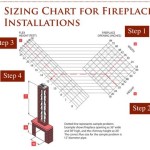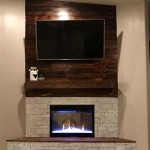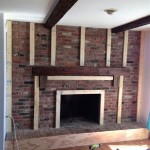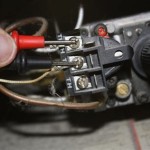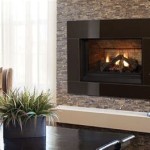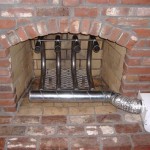Gas Log Fireplace Chimney Cleaning: Ensuring Safety and Efficiency
Gas log fireplaces offer a convenient and aesthetically pleasing alternative to traditional wood-burning fireplaces. They provide the ambiance of a real fire without the hassle of gathering wood and managing ashes. However, despite their convenience, gas log fireplaces require regular maintenance, including chimney cleaning. This is crucial for ensuring the safe and efficient operation of the appliance and preventing potential hazards.
While gas fireplaces produce less soot and creosote than wood-burning fireplaces, they still generate byproducts that can accumulate within the chimney. These byproducts, along with other debris, can obstruct the flue, reducing the efficiency of the fireplace and increasing the risk of carbon monoxide poisoning. Furthermore, blockages can damage the fireplace system, leading to costly repairs.
Understanding the Need for Gas Fireplace Chimney Cleaning
The misconception that gas fireplaces don't require chimney cleaning is a dangerous one. Although gas burns cleaner than wood, it's not a perfect process. The combustion of natural gas or propane releases water vapor, carbon dioxide, and small amounts of other gases, including carbon monoxide. These combustion byproducts can combine with dust, debris, and even animal nests to create blockages within the chimney. Over time, these accumulations can significantly impede the flow of exhaust gases.
Furthermore, the venting system of a gas fireplace is designed to expel these gases safely outside the home. A properly functioning chimney ensures that carbon monoxide, a colorless and odorless gas, is effectively removed. A blocked or partially blocked chimney can cause carbon monoxide to back up into the living space, posing a severe health risk. Carbon monoxide poisoning can lead to symptoms like headaches, dizziness, nausea, and in severe cases, death.
In addition to safety concerns, neglecting chimney cleaning can also impact the efficiency of the gas fireplace. A blocked chimney restricts airflow, causing the fireplace to work harder to maintain the desired temperature. This increased strain can lead to higher energy bills and potentially shorten the lifespan of the appliance. Reduced efficiency also means that the fireplace may not heat the room as effectively, diminishing the overall enjoyment of the fireplace experience.
Animal nests are another common issue in chimneys, regardless of the fuel source. Birds, squirrels, and other small animals may seek shelter in the chimney, especially during colder months. Their nests can completely block the flue, preventing proper ventilation and creating a fire hazard. Regular chimney inspections and cleaning can help prevent animal infestations and ensure the chimney remains clear.
The Gas Fireplace Chimney Cleaning Process
The process of cleaning a gas fireplace chimney typically involves a thorough inspection followed by the removal of any accumulated debris. A professional chimney sweep will use specialized tools and techniques to ensure the chimney is clean and safe to use. It is highly recommended that only certified professionals perform this service, ensuring that the job is done safely and effectively.
The inspection is the initial step and a crucial part of the process. The chimney sweep will examine the entire chimney system, including the flue liner, the chimney cap, and the firebox. They will look for signs of damage, such as cracks, leaks, or corrosion. They will also assess the amount of debris present and identify any potential problems. This thorough inspection helps to determine the best course of action for cleaning and repairs.
Following the inspection, the actual cleaning process begins. The chimney sweep will use a variety of tools, such as brushes, scrapers, and vacuums, to remove any accumulated debris from the chimney. They will typically start from the top of the chimney and work their way down, ensuring that the entire flue is clean. The type of brush used will depend on the material of the flue liner (e.g., stainless steel, clay tile). Using the wrong brush can damage the liner, so it's important to choose the correct tool.
A chimney sweep may also use a video inspection camera to get a closer look at the inside of the chimney. This allows them to identify any hidden problems, such as cracks or obstructions, that may not be visible during a visual inspection. The video inspection provides valuable information that can help to diagnose potential issues and ensure that the chimney is in good working order.
After the chimney is cleaned, the chimney sweep will typically perform a draft test to ensure that the chimney is venting properly. This test involves using smoke to check the airflow through the chimney. If the smoke flows freely up the chimney, it indicates that the chimney is venting correctly. If the smoke backs up into the room, it suggests that there is a blockage or other problem that needs to be addressed.
The entire process should be performed with attention to detail. A professional chimney sweep will protect the surrounding area from dust and debris by using drop cloths and plastic sheeting. They will also properly dispose of any waste materials in accordance with local regulations. The goal is to leave the home clean and safe after the chimney cleaning is complete.
Frequency and Prevention
The National Fire Protection Association (NFPA) recommends that all chimneys, including those used for gas fireplaces, be inspected annually and cleaned as needed. The frequency of cleaning will depend on several factors, including the frequency of use, the type of gas used (natural gas or propane), and the overall condition of the chimney. A professional chimney sweep can assess these factors and recommend an appropriate cleaning schedule.
In addition to regular chimney cleaning, there are several steps that homeowners can take to help prevent the buildup of debris and maintain the efficiency of their gas fireplace. One important step is to ensure that the fireplace is properly ventilated. This means making sure that there is adequate airflow around the fireplace and that the chimney is not blocked by furniture or other objects.
Another preventive measure is to have the gas fireplace professionally serviced on a regular basis. A qualified technician can inspect the fireplace for any signs of damage or malfunction and perform any necessary repairs or adjustments. This can help to ensure that the fireplace is operating safely and efficiently.
Homeowners should also be aware of the potential for animal infestations. Regularly inspect the chimney cap for any signs of damage or wear and tear. A damaged chimney cap can allow animals to enter the chimney and build nests. If you suspect that animals are nesting in your chimney, contact a professional wildlife removal service to have them safely removed. Never attempt to remove animals from the chimney yourself, as this can be dangerous.
Finally, it's crucial to install a carbon monoxide detector in the home, preferably near the fireplace and in sleeping areas. Carbon monoxide detectors provide an early warning of the presence of this dangerous gas, allowing homeowners to take action and prevent poisoning. Test the carbon monoxide detector regularly to ensure that it is working properly. Replace the batteries in the detector at least once a year, or as recommended by the manufacturer.
Neglecting gas fireplace chimney cleaning could have serious consequences. Regular cleaning and maintenance are essential for ensuring the safety and efficiency of the appliance. Routine inspections can catch minor issues before they escalate into significant problems. A clean and well-maintained chimney minimizes the risk of carbon monoxide poisoning and fire hazards, contributing to a safer and more comfortable home environment.

Why Is It Important To Get My Gas Fireplace Logs Clean Regularly

How To Clean Soot From A Gas Log Set Vertical Chimney Care

How Much Maintenance Does A Gas Fireplace Need

How To Clean Soot From A Gas Log Set Full Service Chimney

Fireplace Maintenance For Wood And Gas Fireplaces Sierra Hearth Home

Do Gas Fireplace Chimneys Need Cleaning Fresh Air

Clean And Inspect Your Chimney To Remove Sooty Deposits

Chimney Cleaning Mistakes Dc Area Certified Sweeps

How To Prepare Your Home For A Professional Chimney Sweep

Chimney Sweep Cleaning Wethersfield Glastonbury Hebron Farmington
Related Posts

